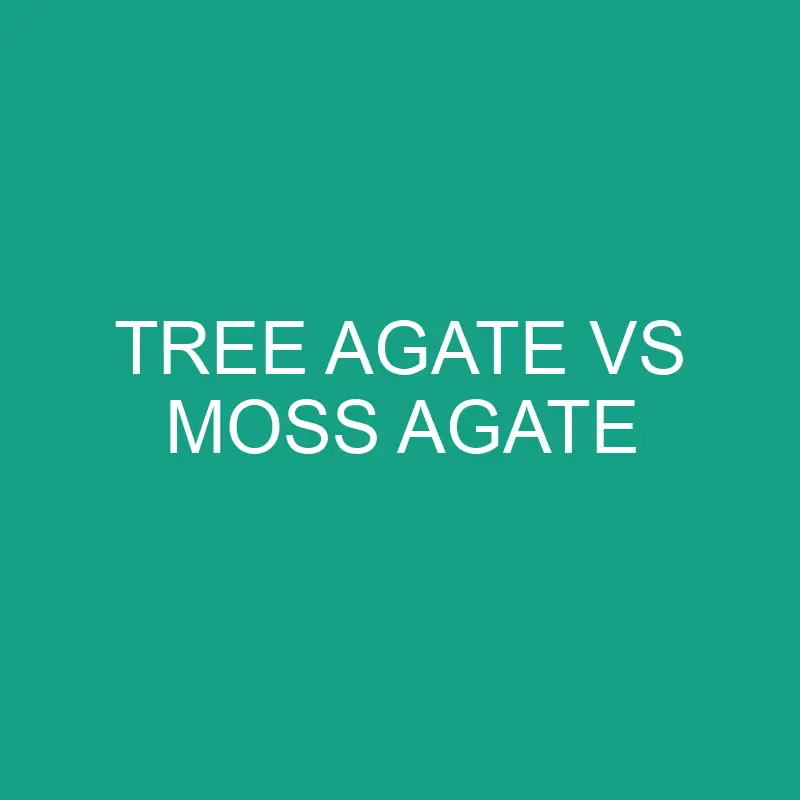Exploring the Green Realms of Banded Gemstones
In the vast world of agates, two varieties that stand out for their enchanting green hues and intricate banding patterns are Tree Agate and Moss Agate. These gemstones, adorned with natural motifs reminiscent of nature’s lush landscapes, have been cherished for centuries for their aesthetic appeal and believed metaphysical properties. In this exploration, we will delve into the distinct characteristics, geological origins, metaphysical symbolism, and uses of Tree Agate and Moss Agate, unraveling the verdant beauty within these banded gemstones.
Post Contents
Tree Agate: The Tranquil Forest Essence
Origins and Geological Background:
- Composition: Tree Agate is a type of chalcedony, a variety of microcrystalline quartz. Its distinct appearance is attributed to the presence of dendritic inclusions, often resembling the branches of trees or ferns.
- Formation: The dendritic patterns in Tree Agate are formed by the inclusion of minerals such as manganese or iron during the agate’s crystallization process.
- Locations: Tree Agate is found in various locations globally, including India, Madagascar, Brazil, and the United States.
Physical Properties:
- Color and Appearance: Tree Agate exhibits a milky white to gray base color with green to black dendritic patterns. The patterns often resemble the delicate branches of trees, creating a serene and nature-inspired aesthetic.
- Banding: While Tree Agate is primarily recognized for its dendritic patterns, it may also display subtle banding in different shades.
Metaphysical Symbolism:
- Connection with Nature: Tree Agate is associated with the grounding and calming energies of nature. It is believed to foster a deeper connection with the natural world and promote tranquility.
- Stability and Growth: The dendritic patterns are often seen as symbolic representations of trees, symbolizing stability, growth, and the cycles of life.
Uses:
- Jewelry: Tree Agate is used in various forms of jewelry, including beads, cabochons, and pendants. Its natural motifs make it a popular choice for those seeking a connection with nature.
- Carvings and Decorative Items: The unique patterns in Tree Agate make it suitable for carved items and decorative pieces, such as figurines or bookends.
Moss Agate: Nature’s Microcosm in Stone
Origins and Geological Background:
- Composition: Moss Agate, like Tree Agate, is a form of chalcedony. Its distinctive appearance is created by manganese or iron oxide inclusions that resemble moss or lichen.
- Formation: The inclusions in Moss Agate create intricate patterns that often resemble a microcosm of a forest floor, with mossy green patches against a translucent or milky background.
- Locations: Moss Agate is found in various locations worldwide, including India, Russia, Brazil, and the United States.
Physical Properties:
- Color and Appearance: Moss Agate typically features a translucent to opaque background, often in shades of white, gray, or milky quartz. The green inclusions create patterns reminiscent of moss or lichen.
- Banding: Moss Agate may display subtle banding, adding to the complexity of its visual appeal.
Metaphysical Symbolism:
- Harmony and Balance: Moss Agate is associated with promoting harmony and balance in one’s life. It is believed to have a stabilizing influence on the emotional and physical aspects.
- Abundance and Growth: The moss-like inclusions are seen as symbols of abundance and growth. Moss Agate is often used in crystal rituals for prosperity and nurturing energy.
Uses:
- Jewelry: Moss Agate is a popular choice in jewelry, often used in cabochons, beads, and rings. Its unique patterns make each piece distinctive and nature-inspired.
- Lapidary Arts: Moss Agate is valued in the lapidary arts for its ability to create stunning carvings, cameos, and engraved gemstones.
- Crystal Grids and Meditation: Due to its metaphysical properties, Moss Agate is used in crystal grids and meditation practices to enhance a sense of balance, abundance, and connection to nature.
Comparative Analysis: Tree Agate vs. Moss Agate
1. Formation:
- Tree Agate: Dendritic patterns resembling trees or ferns, formed by the inclusion of minerals during the agate’s crystallization.
- Moss Agate: Inclusions resembling moss or lichen, created by the inclusion of manganese or iron oxide during the agate’s formation.
2. Color and Appearance:
- Tree Agate: Milky white to gray base color with green to black dendritic patterns.
- Moss Agate: Translucent to opaque background in shades of white, gray, or milky quartz with green moss-like inclusions.
3. Banding:
- Tree Agate: May display subtle banding in different shades.
- Moss Agate: May exhibit subtle banding, contributing to the complexity of its visual appeal.
4. Metaphysical Symbolism:
- Tree Agate: Associated with grounding energies, a connection to nature, and symbolic representations of stability and growth.
- Moss Agate: Linked to promoting harmony, balance, abundance, and growth in one’s life.
5. Uses:
- Tree Agate: Used in jewelry, carvings, and decorative items, particularly for those seeking a connection with nature.
- Moss Agate: Popular in jewelry for its unique patterns, lapidary arts for carvings, and in crystal grids and meditation practices for its metaphysical properties.
Conclusion: Green Realms in Stone
In the lush realms of banded gemstones, Tree Agate and Moss Agate emerge as exquisite representatives, each weaving a story of nature’s artistry within the confines of stone. While Tree Agate captivates with its dendritic patterns reminiscent of tranquil forests, Moss Agate unfolds a microcosm of mossy landscapes, promising harmony and abundance. The choice between Tree Agate and Moss Agate becomes a matter of personal affinity, whether one is drawn to the tree-like motifs or the lush, green intricacies of moss. Both gemstones invite individuals to carry a piece of nature’s beauty with them, creating a harmonious connection between the wearer and the earth’s natural wonders.
